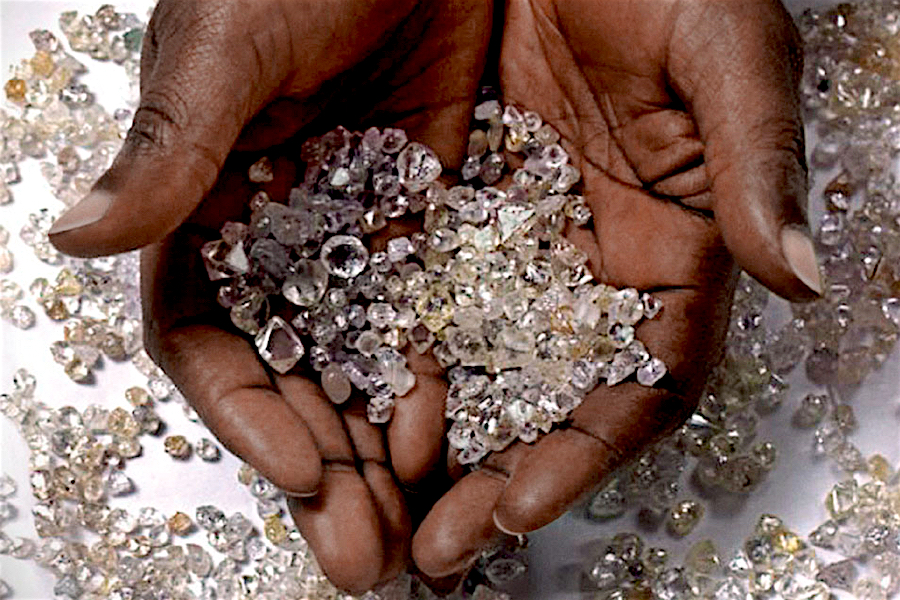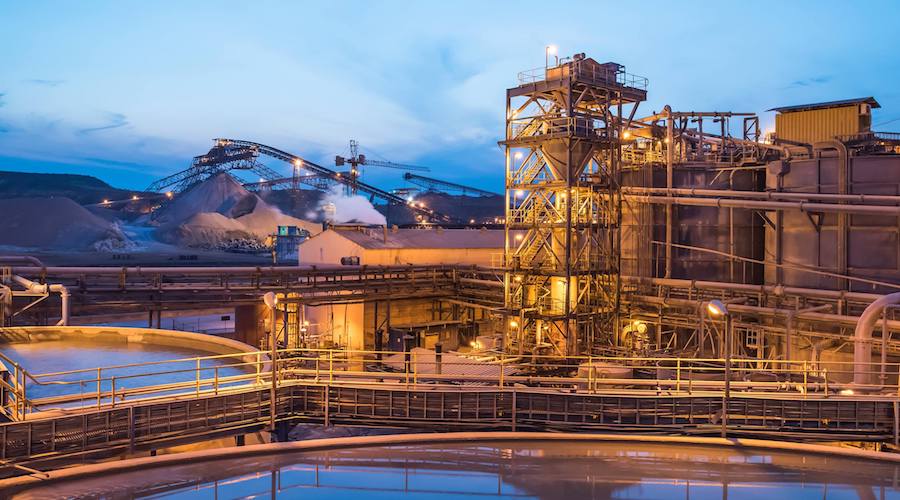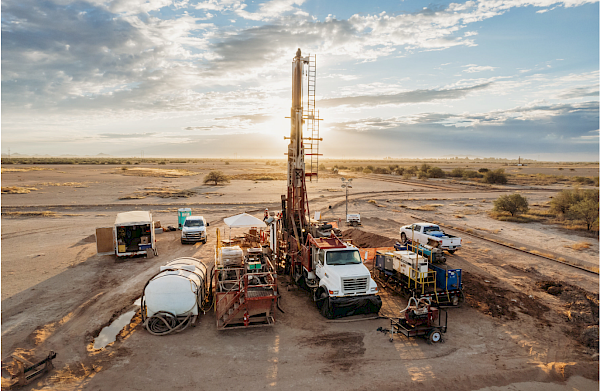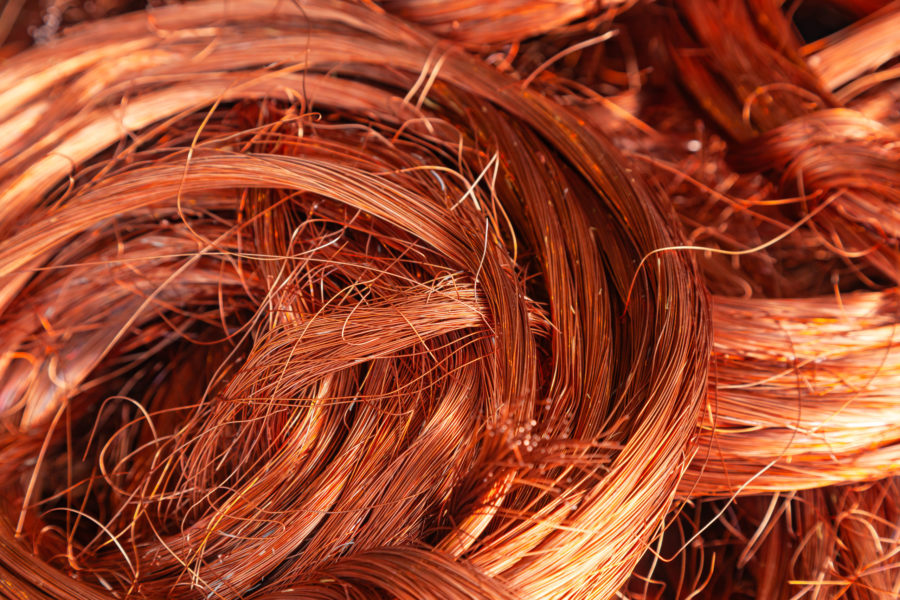How blockchain can track conflict minerals

Blockchain, a form of immutable distributed ledger technology that uses consensus protocols to validate online transactions, is most often associated with bitcoin and other cryptocurrencies.
However, because blockchain transactions are instantly verified across potentially millions of computer networks, could blockchain also be used to verify or “track” transactions beyond those connected to cryptocurrencies and other digital assets? What could this mean for companies with regulatory obligations to track, verify and report certain purchases or sourcing? In the last year and a half, companies have begun exploring these questions. This article examines how blockchain may be used by companies to track and verify the sourcing of “conflict” minerals and, in doing so, fulfill their regulatory reporting obligations pursuant to the U.S. Securities and Exchange Commission (SEC) “Conflict Minerals Rule” and its EU equivalent.
Background
Tantalum, tin, tungsten and gold, or “3TG,” are vital components of widely used technology and other products, from cell phones and batteries to connecting wires, jet airplanes and jewelry.[1] Unfortunately, 3TG has another moniker: “conflict minerals”. The term “conflict minerals” generally describes minerals whose exploitation and trade can be associated with significant adverse impacts, including human rights abuses and armed conflict in the Democratic Republic of Congo and surrounding areas (the “DRC Region”).[2] As more information is uncovered about the dark underbelly of criminal, militia and terrorist networks that profit from conflict mineral exploitation,[3] so grows consumer appetite for information on responsible sourcing. For example, recent years have seen an increase in companies marketing ethically-sourced or “conflict-free” diamonds, gold and other minerals.[4]
Recent years have seen an increase in companies marketing ethically-sourced or “conflict-free” diamonds, gold and other minerals
Increased consumer focus has in turn caused companies and institutional investors concerned with corporate social responsibility to turn their focuses to responsible mineral sourcing. [5] The Interfaith Center on Corporate Responsibility, a coalition of nearly 300 global institutional investors representing several trillion dollars in managed assets, together with the Forum for Sustainable and Responsible Investment earlier this year sent a joint statement to EU policymakers, members of Congress, UN agencies and the Organization for Economic Co-operation and Development (OECD) calling for policymakers to enforce on companies’ due diligence reporting regarding the sourcing of conflict minerals.[6] Non-governmental organizations including civil society groups from the DRC Region and beyond also continue to demand stronger conflict minerals sourcing regulation and transparency.[7]
Blockchain Use Cases
Several companies have begun using or offering blockchain solutions to address some of the problems associated with conflict minerals. For example, Minespider is a startup that attaches encrypted certificates to specified amounts of shipped minerals.[8] The Minespider Protocol currently operates on the Ethereum blockchain and consists of two so-called “layers”: a certification layer and a blockchain layer. For the certification layer, Minespider sells digitally-linked records known as “certificates” to mineral suppliers. Certificates document the ownership and origins of minerals and contain due diligence information chosen by the supplier of the minerals, for example data regarding authorizations, production limits, transfers of possession, etc. and certify through a “Minespider Certifier” that a mineral’s source is conflict-free.
Certification data is tied to a certain amount of minerals produced at a certified conflict-free source.[9] The purpose of the certification data is to allow supply chain participants to ensure that a specified amount of minerals is always traceable to the certified conflict-free source, even if the minerals become processed and mixed with other materials as they move through the supply chain.
Certification data allows supply chain participants to ensure that a specified amount of minerals is always traceable to the certified conflict-free source
This in turn should ensure that the funds exchanged for the minerals remain traceable to certified conflict-free sources. However, the viability of this process depends largely on producers participating in the certification system and on processors and other downstream participants insisting on purchasing only from certified sources. If, for example, a smelter purchases 10 tonnes of a certain mineral used in automobile manufacturing from a supplier and certification data only exists for 9 tonnes of such mineral, then the automobile manufacturer which ultimately purchases the minerals from the smelter cannot be certain that only certified-conflict free minerals are used its in product. On the other hand if the smelter only purchases 9 tonnes of the certified conflict-free minerals from the supplier, then the automobile manufacturer can be sure that only conflict-free minerals are used in its automobiles, despite the fact that the finished automobile is processed and mixed with other materials.
In addition to Minespider, a number of other companies, such as Lucara Diamond Corporation and Everledger, are using blockchain to track and source various minerals.
How Can Blockchain Technology Be Used for Regulatory Compliance?
Beyond consumer and moral concerns, many companies that purchase or use 3TG in their products are incentivized to keep a close watch on the origins of the minerals because of the SEC’s “Conflict Minerals Rule.” This rule, codified under Section 13(p) of the Securities Exchange Act of 1934[10] (the “Exchange Act”), applies to companies that use minerals including 3TG if (1) such company files reports with the SEC and (2) such minerals are “necessary to the functionality or production” of a product manufactured or contracted to be manufactured by the company.[11] The Conflict Minerals Rule requires companies to conduct a good faith and reasonable “country of origin” inquiry that is reasonably designed to determine whether any of the products manufactured or contracted to be manufactured by the company originated in the DRC Region or are from scrap or recycled sources.[12]
If the company (1) knows that the minerals did not originate in the DRC Region or are from scrap or recycled sources, or (2) has no reason to believe that the minerals may have originated in the DRC Region or may not be from scrap or recycled sources, then the company must disclose its determination on an SEC Form SD, provide a description of the inquiry it undertook and the results of the inquiry.[13] In addition, the company is required to make its determination publicly available on its website and include the web address of that site on its Form SD. If the inquiry otherwise determines both that the company (1) knows or has reason to believe that the minerals may have originated in the DRC Region; and (2) knows or has reason to believe that the minerals may not be from scrap or recycled resources, then it must undertake “due diligence” on the source and chain of custody of its conflict minerals and file a “Conflict Minerals Report” as an exhibit to its Form SD.[14] The company must also make the Conflict Minerals Report publicly available on its website and include the web address of that site on its Form SD.[15]
Companies required to file a Conflict Minerals Report must use due diligence methods that conform to nationally or internationally recognized due diligence frameworks, such as the OECD due diligence guidance.[16]
Under the OECD guidance, many companies specify the steps they have taken or will take, if any, since the end of the period covered in the company’s most recently filed Conflict Minerals Report in order to mitigate any risk that its conflict minerals benefit armed groups in the DRC Region, including specifying steps to improve due diligence.[17]
The stringent due diligence requirements of the Conflict Minerals Rule mean that companies that manufacture finished products containing 3TG must conduct due diligence inquiries that are sophisticated and precise enough to trace through the supply chain in order to verify the origins of 3TG. Blockchain’s potential to help in this arena may go a long way towards helping companies comply with their supply chain due diligence and reporting obligations in their SEC Form SDs. It is worth noting here that since its enactment, the Conflict Minerals Rule has been scaled back some. On April 3, 2017, the United States Court for the District of Columbia issued a final judgment on SEC Rule 13(p), finding that disclosure thereunder violated the First Amendment.[18] The current position of the SEC Division of Corporation Finance is that it will not recommend enforcement action for non-compliance with the due diligence and audit requirements of the Conflict Minerals Rule.[19]
Companies required to file a Conflict Minerals Report must use due diligence methods that conform to nationally or internationally recognized due diligence frameworks
However, because public reporting companies now have conflict minerals due diligence and reporting processes in place, most companies continue to comply with the due diligence and conflict minerals report aspects of the rule, in part in response to pressures from NGOs, investors and other stakeholders. The SEC’s decision to curb the Conflict Minerals Rule has been met with pushback from groups ranging from civil society and local government groups in the DRC Region to NGOs and institutional investor organizations.[20]
Conflict Minerals due diligence is not unique to the U.S. While some companies based in the EU have voluntarily taken part in establishing such due diligence systems (particularly in conjunction with the OECD’s guidance) or as a result of supplying products or components to companies that are subject to, or themselves being subject to, the U.S. Conflict Minerals Rule, EU-based companies will soon have their own set of rules to comply with. The EU Conflict Minerals Regulation (the “EU Regulation”) was adopted by the EU Parliament and EU Council on May 17, 2017 and will take effect in the EU on January 1, 2021.[21] Like its U.S. counterpart, the EU Regulation covers 3TG and requires that affected parties meet international responsible sourcing standards established by the OECD.[22]
However, unlike the SEC’s Conflict Minerals Rule, the EU Regulation’s application is not limited to minerals sourced from the DRC Region; it directly applies to companies importing 3TG into the EU, no matter their origin.[23] The European Commission will annually publish an indicative and non-exhaustive list of “high risk” areas to assist with this determination.[24] The EU Regulation currently applies directly to between 600 and 1000 EU-based importers.[25] Indirectly, about 500 smelters and refiners of 3TG based both within and beyond the EU will be subject to the regulation because EU importers will be required to identify smelters and refiners in their supply chains and ensure that they have appropriate due diligence systems in place.[26] To assist EU importers with this requirement, the European Commission will publish a list a “white-list” of global smelters and refiners which source 3TG responsibly.[27]
Additionally, the EU regulation lays out different sets of rules depending on whether a company is an “upstream” or a “downstream” company. Upstream companies (companies that extract, process and refine raw minerals) must comply with the mandatory due diligence rules when they import 3TG.[28] Downstream companies (companies that process raw minerals into finished products) are divided into two categories: (1) those that import metal-stage products and (2) those that operate beyond the metal-stage. The former must meet mandatory due diligence rules and the latter, while not required to satisfy mandatory due diligence rules, must use reporting and other tools to ensure that their due diligence is transparent.[29] Each EU Member State is required to examine whether their respective importers comply with the EU Regulation.[30] To that end, Member States are empowered to examine documents and audit reports to ensure compliance with the OECD guidance and even carry out on-the-spot inspections of an importer’s premises.[31] While there is still over a year left before the EU Regulation comes into effect, the European Commission encourages all companies to which the regulation applies to start carrying out due diligence before the effective date.
Takeaways
As regulators and human rights groups increase pressure on companies to certify that the minerals they source, purchase or use are conflict-free, companies will continue to look for cost-effective, practical solutions to assist with their due diligence inquiries. Blockchain, as an immutable digital ledger, has been improving industries globally by driving operational efficiencies and has the potential to help companies increase transparency in their supply chains. Companies appear to be taking note and we expect to see more buy-in into the blockchain solution to the problem of conflict minerals in years to come.
(By Cynthia Urda Kassis, Head of Shearman & Sterling’s Metals & Mining practice and partner in the firm’s Project Development & Finance practice, Jonathan Handyside, counsel in Shearman & Sterling’s European Capital Markets practice and Naffie Lamin, associate in Shearman & Sterling’s Derivatives and Structured Products practice.)
Footnotes:
[1] Niobium (Columbium) and Tantalum Statistics and Information, U.S. GEOLOGICAL SURVEY, available at http://minerals.usgs.gov/minerals/pubs/commodity/niobium.; Tin Statistics and Information, U.S. GEOLOGICAL SURVEY, available at http://minerals.usgs.gov/minerals/pubs/commodity/tin/; Gold Statistics and Information, U.S. GEOLOGICAL SURVEY, available at http://minerals.usgs.gov/minerals/pubs/commodity/gold.
[2] Section 1502(e)(4) of the Dodd-Frank Wall Street Reform and Consumer Protection Act. The term “conflict mineral” includes (i) columbite-tantalite, also known as coltan; cassiterite; gold; wolframite; or their derivatives; or (B) any other mineral or its derivatives determined by the Secretary of State to be financing conflict in the Democratic Republic of Congo or an adjoining country. Presently, the U.S. Secretary of State has not designated any other mineral as a conflict mineral.
[3] The United Nations Group of Experts on Congo found in 2016 that gold “provides the most significant benefit to armed groups.” U.N. Security Council, “Final report of the Group of Experts (2016),” pg 2, May 23, 2016, available at http://www.un.org/ga/search/view_doc.asp?symbol=S/2016/466.
[4] See e.g. Brilliant Earth’s “beyond conflict-free” diamonds (https://www.brilliantearth.com/conflict-diamond-facts/); World Gold Council “conflict-free gold standard” (https://www.gold.org/sites/default/files/documents/Conflict_Free_Gold_Standard_English.pdf_; Mia Donna’s “conflict free engagement rings” (https://www.miadonna.com/pages/conflict-free-engagement-rings).
[5] See e.g. Merck & Co., Inc. and subsidiaries’ “Public Policy Statement: Conflict Minerals,” May 2018, available at https://www.merck.com/about/views-and-positions/conflict_minerals_policy.pdf; the Walt Disney Company’s “Conflict Minerals Policy”, 2017, available at https://www.thewaltdisneycompany.com/wp-content/uploads/Conflict-Minerals-Policy.pdf, Gap Inc.’s “Factory Conflict Minerals Policy”, available at http://www.gapinc.com/content/dam/gapincsite/documents/Gap%20Inc.%20Factory%20Conflict%20Minerals%20Policy.pdf.
[6] Interfaith Center on Corporate Responsibility, available at https://www.iccr.org/sites/default/files/resources_attachments/investor_letter_on_1502-conflict_minerals_011218.pdf.
[7] See Thematic Working Group on Mining and Natural Resources, “An Appeal From the Civil Society Organizations of South Kivu in The Democratic Republic of Congo In Reaction To The Announcement Made by the Security and Exchange Commission (SEC) Regarding The Trump Administration’s Decisions To Issue An Executive Order Aiming At Suspending The Dodd-Frank Act (“The Obama Law”)”, February 10, 2017, available at https://www.sec.gov/comments/statement-013117/cll2-1597728-132417.pdf; European Network for Central Africa, “Ensuring Robust EU Legislation on Responsible Mineral Sourcing,” July 2014, available at https://www.eurac-network.org/sites/default/files/joint_civil_society_briefing._ensuring_robust_eu_legislation_on_responsible_mineral_sourcing_-_july_2014.pdf. [1]
[8] Minespider, “Protocol for Due Diligence in the Raw Material Supply Chain,” p.7, 2018, available at https://uploads-ssl.webflow.com/5bb20121ca2e96ee01db29bc/5c0fa81d4a4585e37ea764b7_Minespider_Whitepaper.pdf.
[9] Id.
[10] 15 U.S.C. 78a et seq.
[11] 15 U.S.C. 78m(p)(2).
[12] Securities and Exchange Commission Final Rule, 17 CFR PARTS 240 and 249b, release No. 34-67716; File No. S7-40-10, Section 2(D)(1), available at https://www.sec.gov/rules/final/2012/34-67716.pdf.
[13] Securities and Exchange Commission Final Rule, 17 CFR PARTS 240 and 249b, release No. 34-67716; File No. S7-40-10, Section 5(D), available at https://www.sec.gov/rules/final/2012/34-67716.pdf.
[14] Id.
[15] See Exchange Act Section 13(p)(1)(E) (stating that each issuer “shall make available to the public on the Internet website of such [issuer] the information disclosed under” Exchange Act Section 13(p)(1)(A)).
[16] See Organization for Economic Co-operation and Development, “Due Diligence Guidance for Responsible Supply Chains of Minerals from Conflict-affected and High Risk Areas,” 2011, available at http://www.oecd.org/daf/internationalinvestment/guidelinesformultinationalenterprises/46740847.pdf.
[17] Securities and Exchange Commission Final Rule, 17 CFR PARTS 240 and 249b, release No. 34-67716; File No. S7-40-10, Section 2(C)(6), available at https://www.sec.gov/rules/final/2012/34-67716.pdf.
[18] Nat’l Ass’n of Mfrs., et al. v. SEC, No. 13-CF-000635 (D.D.C. Apr. 3, 2017).
[19] Securities and Exchange Commission Division of Corporate Finance, “Updated Statement on the Effect of the Court of Appeals Decision on the Conflict Minerals Rule,” Apr. 7, 2017, available at https://www.sec.gov/news/public-statement/corpfin-updated-statement-court-decision-conflict-minerals-rule#_ftn2.
[20] See supra notes 7 and 8.
[21] European Commission Press Release, “EU Reaches Landmark Agreement on Conflict Minerals Regulation,” Nov. 22, 2016, available at http://europa.eu/rapid/press-release_IP-16-3931_en.htm.
[22] European Commission, “The Regulation Explained,” available at http://ec.europa.eu/trade/policy/in-focus/conflict-minerals-regulation/regulation-explained.
[23] Id.
[24] Id.
[25] Id.
[26] Id.
[27] Id.
[28] Id.
[29] Id.
[30] Id.
[31] Id.
More News
{{ commodity.name }}
{{ post.title }}
{{ post.date }}




Comments